Marketing is Marketing, Tradeshows are … Something Else

“How many times have you attended/participated in/walked our show?” Peter Owen, chairman of the IBC (International Broadcasting Convention) Council asked me during a break at another conference.
Come on, everyone in the M&E (media & entertainment) industry has been to the (arguably) largest and most influential show in the EMEA (Europe, Middle East, Africa) and perhaps the world.
Actually, I’ve been to so many shows I have enough badges to make guitar picks for The Boss (Bruce Springsteen) for the next 100 plus years!
Owen then asked how they could improve (translation, get more exhibitors) at the Amsterdam event.
My problem with IBC, CES (Consumer Electronics Show), NAB (National Association of Broadcasters) and smaller/vertical venues like FMS (Flash Memory Summit) and the thousands of horizontal/vertical events is their focus on getting the whales (large exhibitors) to take more show real estate so the rest of the fish would follow.
Up-and-comers and new entrants are left with less than desirable locations. The whales take more space at the key traffic locations and it never seems to get better.
Hey, it’s a business, I get it! And a really big business–about $10B annually, according to the Center for Exhibition Industry Research (CEIR).
The problem is most marketing teams don’t have event marketing plans that will help them compete with the whales. They have an event calendar and budget!
They’re so taken for granted that even Gartner, which is famous for its hype cycle, puts events on the down side of the cycle in the Trough of Disillusionment.
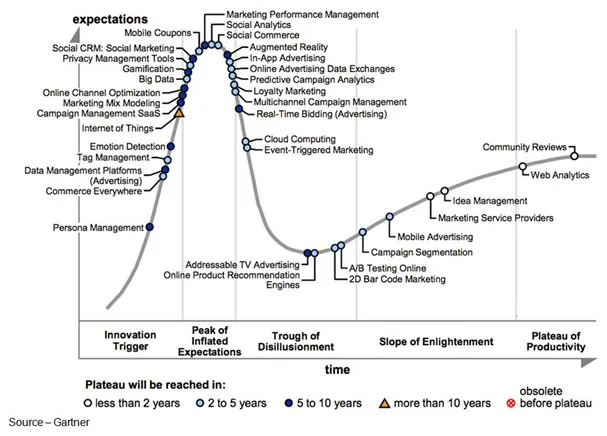 Hype Cycle – While events may be a major corporate marketing investment with the potential for the greatest return, they still get the least attention when it comes to marketing strategy and analysis.
Hype Cycle – While events may be a major corporate marketing investment with the potential for the greatest return, they still get the least attention when it comes to marketing strategy and analysis.
Events simply aren’t as sexy as all the new things marketing folks have to chase and appear knowledgeable in.
Even with Marketo, SalesForce, Constant Contact and other marketing/sales management software, big data and ad analytics are more exciting.
There are so many “opportunities” clamoring for marketing’s attention that they seldom have plans, strategies and post mortem analysis for trade shows/events, despite the fact that they have such a huge share of the marketing budget.
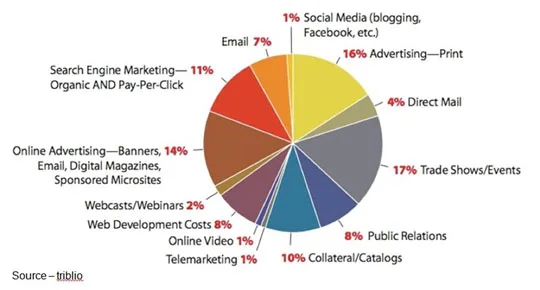 Your Budget May Vary – There are probably more formulas on how companies should invest their marketing budgets for the best ROI than how much you should set aside for R&D (research and development). Despite the disagreement, trade shows and conferences always seem to represent the largest chunk of the budget – 14-20 percent.
Your Budget May Vary – There are probably more formulas on how companies should invest their marketing budgets for the best ROI than how much you should set aside for R&D (research and development). Despite the disagreement, trade shows and conferences always seem to represent the largest chunk of the budget – 14-20 percent.
And that budget doesn’t include the staff time spent in preparation for, at the event and following the show.
In other words, whatever the budget you have for a specific event or all of your events, double it.
You’re probably closer to the actual cost.
Rather than saying:
- We always attend that show – companies and events have cycles, your marketing emphasis may have shifted.
- All of our competition will be there – remember what your mom said about sticking your hand in a fan.
- The show is too big, too small – it doesn’t matter if 500 or 500,000 attend, you don’t want all of them … just those who will help your company grow.
- The show was a waste last time – do a brutal analysis following every event, measuring direct and indirect benefits such as exposure in new markets, depth and breadth of key contacts, reinforcement of customer relationships, what was done right/wrong at the event.
There are no right answers, but if there’s no plan/strategy you can’t measure results and you can’t manage for the future.
Or, to put them in terms management understands, trade shows/events help you build your brand, generate sales leads, and strengthen relationships with customers and key prospects.
They can provide you valuable face-time with the most buyers in the shortest time. And that’s why trade shows continue to grow in importance, even in the digital era.
All too often, companies simply:
- Pick the show(s)
- Get the best location, size the budget will allow
- Design the booth
- Set-up, man the booth
- Tear-down the booth, come home
- Say how good/bad it was
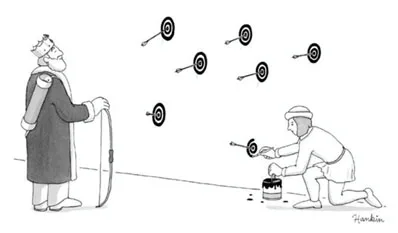 Another Bullseye – With a lack of pre- and post-event analysis, most tradeshow activity is based on fire, ready, aim activities as to which show delivered the best results.
Another Bullseye – With a lack of pre- and post-event analysis, most tradeshow activity is based on fire, ready, aim activities as to which show delivered the best results.
Yep, that’s about it.
How good the booth looked, how many tchotchkes (promotion items) are often more important than specifics:
- Competitive analysis
- Specifics learned at the event
- New relationships established
- Existing relationships reinforced
- Number/quality of leads
- Incremental revenue through sales channels
- Soft objectives such as:
- —Brand awareness reinforcement
- —Media coverage
- —Industry analyst meetings
And you wonder why management views trade shows/events as an expense rather than an investment?
Marketing has to focus on how to attract interest, how to be remembered and how to turn prospects into customers. It requires a strong balance of marketing and sales.
Attendees come to these events to find out about new/better products/solutions, gain a better understanding of you and your competition and to determine if you can solve their needs better than your competition.
In other words, it’s not about the sound/flash of your booth or the eye candy of your stage; it’s about your products/solutions/services … and your people!
And that, my friend, is where most trade show marketing efforts start … and stop.
Pre-show promotions
To ensure you get the most from your trade show/conference investment, start early.
For major national/international events, start a year in advance by reviewing their educational/informational program, determining where your company and its messages best fit in and submit your best attendee-benefit topics possible.
For regional/secondary events, plan six months (or less) in advance.
Session visibility and subject expertise is unquestionably one of the most effective ways of highlighting your management, your customers and your technology/solution leadership.
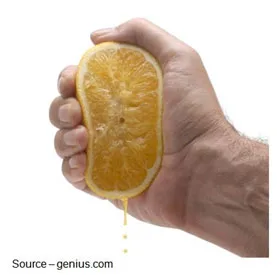 Make Every Drop Count – It doesn’t matter if you have a huge or a modest budget for your tradeshow/conference activities, the key is to get the best return-on-investment from every event.
Make Every Drop Count – It doesn’t matter if you have a huge or a modest budget for your tradeshow/conference activities, the key is to get the best return-on-investment from every event.
Oddly, organizations seriously fail to take full advantage of the event’s opportunities.
CEIR reports that firms use less than five percent of their event budget on pre-show promotion.
Remember, show/event attendees travel there to invest several days in improving their business … not yours.
To take advantage of the opportunity, you have to focus not just on making the best use of every minute of face-to-face time but on getting the right people to your booth during the event.
 Face-to-Face – Of all of the marketing/sales tools and activities available to firms today, face-to-face discussions and tradeshow activities still prove to be the most productive for today’s firms, even in the ever-on, online world.
Face-to-Face – Of all of the marketing/sales tools and activities available to firms today, face-to-face discussions and tradeshow activities still prove to be the most productive for today’s firms, even in the ever-on, online world.
Pre-event strategies include:
- Targeted communications to registered attendees – determine the job/position profile of your prospects, talk with show management and carry out targeted communications activities to these individuals to encourage them to visit your booth, schedule a meeting/appointment. Not everyone who attends the event is a potential partner/customer.
- Use your customer/prospect database to meet with you at the show. Even if they aren’t attending it is a reminder of your relationship with them.
Media strategy:
- Depending on the event, a couple of thousand or a few hundred members of media and market research firms attend the conference/show to cover industry trends, new products, new applications and trends for their audience. Take advantage of the one-on-one opportunities.
- If you’re making an announcement (major or minor), don’t assume all of the media folks are going to come by. Remember, there are a few hundred/thousand other firms at the event clamoring for facetime … you have to earn your unfair share.
- If there isn’t an announcement/unveiling, set up meetings to discuss customer successes, new applications, business trends, things that interest their audience, them
- Focus on the quality of the meetings, not the volume of meetings.
- Creatively use tools like VPO (Virtual Press Office) to reach media and analysts globally because not every editor/reporter has the budget to attend every conference. Help them help you.
- Take advantage of show media venues like ShowStoppers to reach media attendees prior to the show floor opening to schedule added media meetings/coverage at and following the event.
Look beyond the show floor activities:
- At NAB and IBC, there is a unique event for independent filmmakers called SuperMeet where hundreds of Indies meet to find out what’s new for them, renew acquaintances, relationships. Other conferences have similar sidebar events and they are a great venue for developing personal relationships with customers as long as you have a plan of action rather than simply pay your money and attend.
- Carry out relationship building breakfasts or dinners with 10-30 customers and members of the media. Forgo the parties and focus on strengthening your relationship with customers, the media and the people attending the conference. You can party/celebrate after the conference.
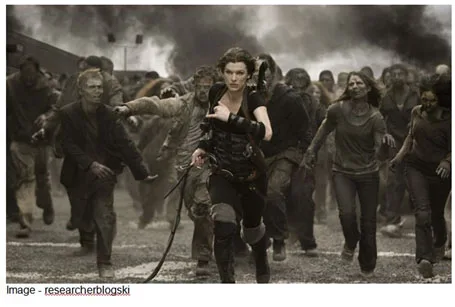 There are proven methods for maximizing the opportunities trade shows offer, but until marketing teams begin using them, their success in cutting through the noise level at trade shows and events will be limited.
There are proven methods for maximizing the opportunities trade shows offer, but until marketing teams begin using them, their success in cutting through the noise level at trade shows and events will be limited.
By starting with a comprehensive event marketing plan, a trade show will no longer be viewed as an expense. It will be an investment.
# # #